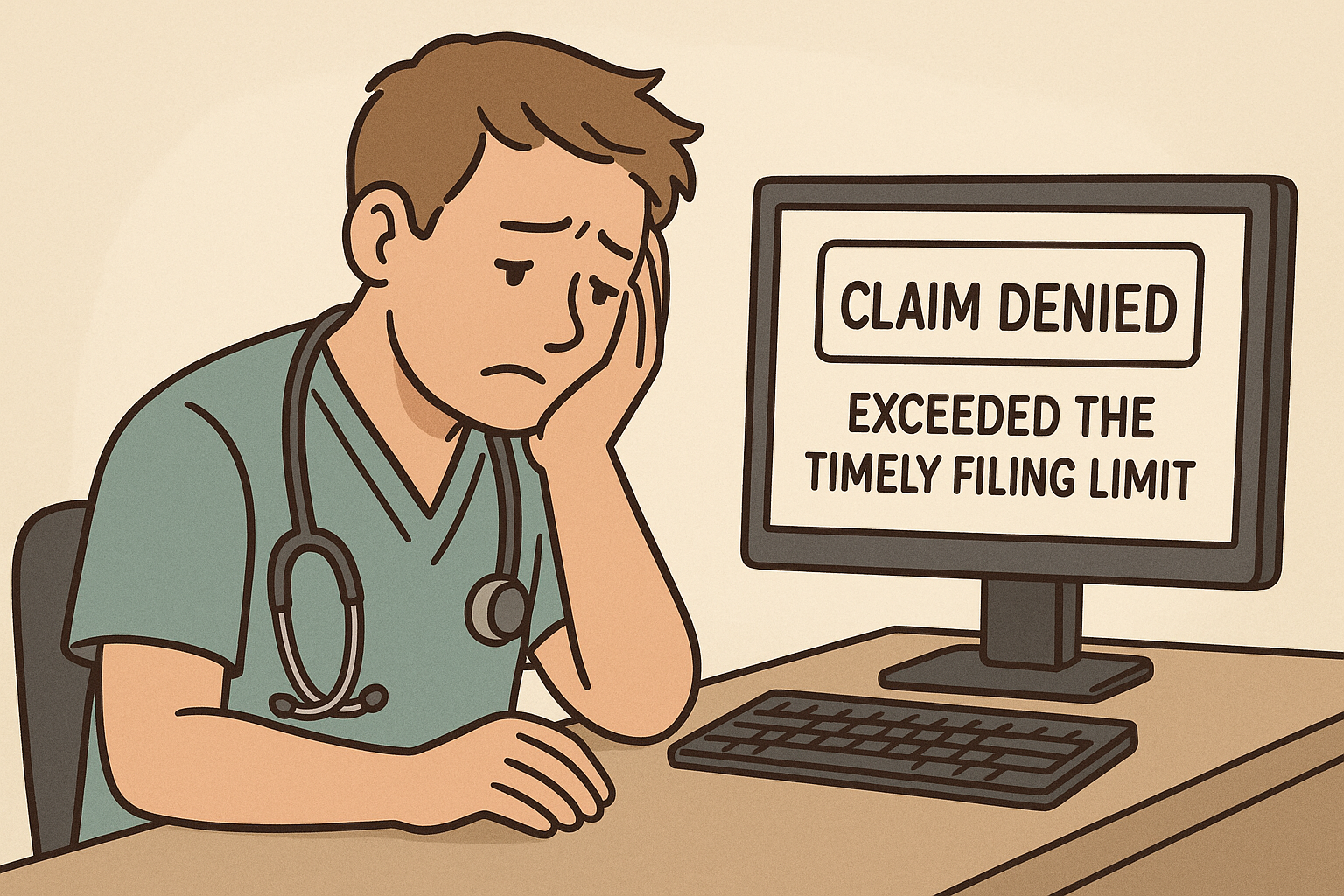What is Denial Code 29?
Denial Code 29 in medical billing indicates “The time limit for filing has expired.” This means that the claim was submitted after the payer’s allowable timeframe for claim submission, resulting in denial. Every insurance payer, including Medicare, Medicaid, and commercial insurers, has a specific timeframe within which claims must be filed. If a provider fails to submit within this period, the claim is automatically denied.
Common Causes of Denial Code 29
Several factors contribute to Denial Code 29, including:
- Late Submission of Claims
- The claim was not submitted within the payer’s specified filing deadline (e.g., 90 days, 180 days, or one year from the date of service).
- Lack of Awareness About Payer’s Filing Deadlines
- Different insurance companies have different claim submission deadlines, and failure to track them can lead to denials.
- Incorrect or Incomplete Claim Submission
- Claims with errors, missing information, or incorrect patient details may be rejected initially, causing delays that push them past the filing deadline.
- Claim Resubmission Delays
- If an initial claim is denied and providers take too long to correct and resubmit it, it may exceed the timely filing limit.
- Delays in Gathering Supporting Documentation
- If additional medical records, authorizations, or referrals are required and not submitted on time, the claim might miss the deadline.
- Internal Billing System Issues
- Poor claim tracking, billing software failures, or staff oversight can lead to untimely submission.
How to Fix Denial Code 29
If a claim has been denied due to Denial Code 29, there are limited options for recovery, but you can try the following steps:
1. Review the Payer’s Timely Filing Guidelines
- Check the insurance company’s specific filing deadlines. These are usually outlined in the provider contract or available on the payer’s website.
2. Determine If There Are Exceptions to Timely Filing Rules
- Some insurance companies allow exceptions to timely filing if the provider can demonstrate valid reasons for late submission, such as:
- System errors or payer processing issues
- Natural disasters or emergency circumstances
- Delayed patient eligibility information
- Errors in initial claim submission causing delays
- If applicable, submit a timely filing appeal with supporting documentation.
3. Gather Supporting Documentation for an Appeal
- If you believe the denial was incorrect or there were valid reasons for late submission, prepare supporting documents such as:
- Proof of initial timely submission (e.g., electronic claim acceptance report, fax confirmation, or certified mail receipt)
- Correspondence showing delays due to payer errors
- Any evidence of extenuating circumstances (e.g., patient eligibility verification delays)
4. File an Appeal with the Insurance Payer
- Submit an appeal letter along with supporting documents to the payer.
- Ensure that the appeal is filed within the payer’s appeal window (often 30-90 days from the denial date).
5. Resubmit the Claim if Still Within the Filing Deadline
- If the denial was due to an internal error but the deadline has not yet passed, correct the claim and resubmit it promptly.
6. Request a Goodwill Consideration from the Payer
- In some cases, payers may consider an exception if it’s a first-time issue, especially if a provider has a good track record of timely submissions.
How to Prevent Denial Code 29 in the Future
Preventing Denial Code 29 requires proactive strategies to ensure all claims are submitted within the required timeframe. Below are some best practices:
1. Track Timely Filing Limits for Each Payer
- Maintain a timely filing chart for all payers to ensure staff members are aware of submission deadlines.
- Regularly update the chart as payer policies change.
2. Submit Claims as Soon as Possible
- Implement a policy that requires all claims to be submitted within 24-48 hours of service delivery.
- The earlier a claim is submitted, the more time you have to correct any issues.
3. Monitor Claim Status Regularly
- Use medical billing software to track claim submission and payment status.
- Set up alerts for pending or denied claims to take action before deadlines expire.
4. Implement an Effective Claim Denial Management Process
- Have a dedicated denial management team that regularly reviews denied claims and appeals them quickly.
- Conduct weekly or monthly audits of denied claims to identify patterns and prevent recurrence.
5. Use Electronic Claim Submission
- Submitting claims electronically reduces processing time and provides a submission receipt, which can be used as proof if an appeal is needed.
- Most payers offer electronic data interchange (EDI) services for faster processing.
6. Train Billing and Administrative Staff
- Provide ongoing training to ensure all staff members understand:
- The importance of timely filing
- How to track claim deadlines
- How to properly document claim submission attempts
7. Automate Claims Submission with Billing Software
- Utilize automated billing software to:
- Send reminders for pending claims
- Auto-submit claims within the required timeframe
- Track submission dates for compliance
8. Keep Documentation and Submission Proof
- Always keep proof of submission, such as:
- Clearinghouse reports
- Claim tracking logs
- Certified mail receipts (for paper claims)
9. Work Closely with Payers
- Build relationships with payer representatives to stay updated on policy changes.
- Request extensions in special cases where unavoidable delays occur.
Conclusion
Denial Code 29 is one of the most challenging billing denials because insurance companies typically do not allow late claim submissions. However, by understanding payer deadlines, appealing when justified, and implementing a robust billing workflow, healthcare providers can significantly reduce these denials.

